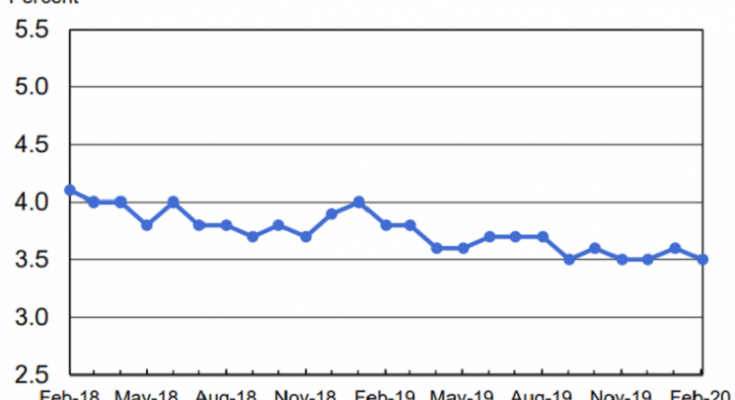Total nonfarm payroll employment rose by 273,000 in February, and the unemployment rate was little changed at 3.5 percent, the U.S. Bureau of Labor Statistics reported today. Notable job gains occurred in health care and social assistance, food services and drinking places, government, construction, professional and
technical services, and financial activities.
Both the unemployment rate, at 3.5 percent, and the number of unemployed persons, at 5.8 million, changed little in February. The unemployment rate has been either 3.5 percent or 3.6 percent for the past 6 months.
Among the major worker groups, the unemployment rate for Asians declined to 2.5 percent in February. The rates for adult men (3.3 percent), adult women (3.1 percent), teenagers (11.0 percent), Whites (3.1 percent), Blacks (5.8 percent), and Hispanics (4.4 percent) showed little or no change over the month.
The number of long-term unemployed (those jobless for 27 weeks or more), at 1.1 million, changed little in February and accounted for 19.2 percent of the unemployed.
The labor force participation rate remained at 63.4 percent in February. The employment-population ratio, at 61.1 percent, changed little over the month but was up by 0.4 percentage point over the year.
The number of persons employed part-time for economic reasons, at 4.3 million, changed little in February. These individuals, who would have preferred full-time employment, were working part-time because their hours had been reduced or they were unable to find full-time jobs.
In February, 1.4 million persons were marginally attached to the labor force, little changed from the previous month. These individuals were not in the labor force, wanted and were available for work, and had looked for a job sometime in the prior 12 months but had not looked for work in the 4 weeks prior to the survey. Discouraged workers, a subset of the marginally attached who believed that no jobs were available for them, numbered 405,000 in February, little different from the previous month.

